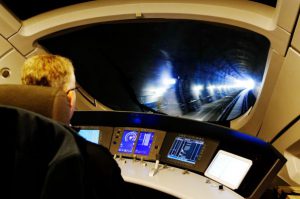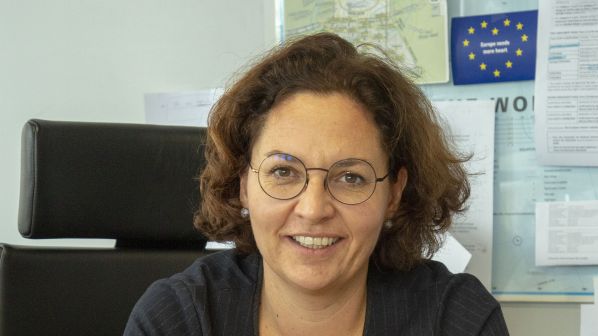THE creation of a Single European Railway Area (Sera) which sweeps away national boundaries and opens up the rail market to competition has been a dream of European Union policy makers since the early 1990s, but this year and certainly by 2020 it should become a reality thanks to the implementation of the technical and market pillars of the Fourth Railway Package.
“2019 is a very a special year because of Sera and key dates for the Fourth Railway Package,” Ms Elisabeth Werner, land transport director with the European Commission’s (EC) Directorate General for Mobility and Transport (DG Move), told IRJ in Brussels. “In June the EU Agency for Railways becomes a fully-fledged organisation which should lead to a massive simplification. For us it is very important that the Agency becomes very well respected especially for cross-border issues.
“I think we are well prepared on the EU side for the technical pillar of the Fourth Railway Package, but I am disappointed that some EU member states won’t start until 2020, so we won’t get the full benefits until then.
“But I want to emphasise that we are working on a smooth implementation of the market pillar. We have learnt from past experience that we need to work with operators and infrastructure managers to ensure that everyone is clear on what they have to do. It is also important to strengthen regulatory bodies to ensure a level playing field.
“2019 is also a critical year between the old EU programme period [2014-2020] and the new one [2021-2027]. We are proposing a new Shift2Rail undertaking and discussing a new Connecting Europe Facility (CEF). CEF has been an enormous success. We have spent almost all of the money, and we have some key performance indicators to show that journey times have been reduced because of CEF spending.”
Werner says a real effort was made to define the new budget last year and this will continue in 2019. A key objective will be to improve interoperability. “We cannot afford to spend billions on infrastructure projects if trains still have to stop at borders,” Werner told IRJ. She says DG Move has been working with the EU Freight Corridors to achieve breakthroughs. “These are not legislative or big infrastructure projects, but initiatives designed to have a major impact on rail services,” Werner explains. “We are working on things such as brakes, train composition, and language, so that we gain time and reduce operating costs on the major corridors. These are low hanging fruits.
“We are asking the rail sector to identify operational hurdles, put them in a logbook, and work out who is best placed to solve the problems. We expect some of them to be solved in 2019.
“The rail freight corridors still have some unused potential, so we are seriously considering how we can develop them further. We will focus on measuring the loading gauge along the corridors. In spite of all of our efforts, the data do not seem to accurately reflect the real situation, leading to ghost bottlenecks. We need to have accurate, reliable and unbiased parameters.”

Werner says she is very satisfied with the concept and governance of the TEN-T corridors because they are very customer-focussed. “Some corridors are more active than others,” she says. “This is partly human nature, but it also depends how much the member states back them. We need to develop capacity allocation and have better coordination between infrastructure managers and operators. We are proceeding to an evaluation of the freight corridors and public consultation to consider the next step.”
Werner says ERTMS will continue to be a spending priority for DG Move. “I think 2019 will be an important year for ERTMS,” Werner says. “We are still only at 10% of where we want to be by 2030, and there is still more ERTMS outside the EU than within it. We want to encourage railways to adopt ERTMS. There is a clear business case at the EU level, and we are working to get the costs down. We have been encouraging member states to bring operators together [to help achieve this].”
Werner paid tribute to Mr Karel Vinck, the ERTMS coordinator, who stepped down in December. “We now have clear milestones for how many kilometres should be equipped and by when,” Werner says. “We now want to do the same for the equipment of rolling stock - this would be Karel’s legacy.”
Research
“Shift2Rail is very strongly supported by the railway industry and illustrates the benefits of public-private partnerships (PPP) for research and development,” Werner told delegates at the European Rail Research Advisory Council (Errac) plenary session on November 30. “We have received an impressive number of letters of support for a future programme. The entire Commission is very keen to continue joint research with the rail sector.
“We are looking at the lessons learnt from Shift2Rail. We want to include urban mobility players, small and medium-size enterprises, and the newest EU member states. We see digitisation and deep decarbonisation as major priorities for rail. Automation will produce greater reliability and the ability to react quickly and have better resilience.”
For passenger rail, Werner wants to see more multimodal information and ticketing especially in urban areas. “Rail is vital for densely-populated areas,” she says. “We are not simply innovating for more beautiful railways, we need to serve the customers better.
“We have ideas ready in the drawer for the new Shift2Rail. The objectives still remain valid and just need to be updated.”
Werner listed some of the key objectives for Shift2Rail 2:
- a 50% reduction in life-cycle costs
- increasing capacity, reliability and punctuality, and
- removing obstacles to intermodality to create Sera.
“We want to invest more in smart infrastructure rather than hard infrastructure especially for the next CEF programme,” Werner told Errac delegates.
The EC has adopted the goal for the EU to become carbon neutral by 2050. “Rail is practically the only way we have to decarbonise transport,” Werner told Errac delegates.
“This is a clear call to use rail more for freight,” Werner explained to IRJ. “We are really engaging with shippers and logistics companies to reduce their carbon footprint. It is often not the cost or speed which deters freight shippers from switching to rail, but poor punctuality and reliability. We need investment to improve the links to ports and terminals.
“We need behavioural changes to achieve our decarbonisation targets, and we need to see whether additional measures are necessary to reach our goals.”
The long hot summer and dry autumn in 2018 has led to low water levels in the River Rhine which has seriously curtailed barge traffic on this important north-south freight artery. Werner says even though the situation was known about in July, rail has been unable to come to the rescue.“This shows that our transport system is very strained in its capacity especially in densely-populated Western Europe and there is very little flexibility.” The Rastatt blockage of the Mannheim - Basle main line in 2017 also demonstrated rail’s inability to deal effectively with such incidents.“We need more diversionary routes which are up to the standards we need,” Werner says. She also wants to speed up railway transformation and modernisation, and points to the recent Italian initiative to introduce high-speed freight trains as a way to break into new markets.
“Multimodality is intuitively the right thing, but it needs a push,” Werner says. “We are working on electronic freight documents, for example, and rail needs to take part. We are also continuing our work on multimodal data - intelligent transport systems.”
Passenger transport in Europe is also facing capacity issues. “We have terrible congestion in the European airspace, and 2018 has been one of the worst years,” Werner told Errac delegates. “This is why we strongly support high-speed lines linking EU capitals. We would be extremely happy to have more high-speed rail links. A new link is being discussed between Amsterdam and Berlin, and this is something we would support.
“People want door-to-door connectivity, and we need to take it to the next step. We want to eliminate national borders with European trains running on a European network,” Werner concludes. IRJ

